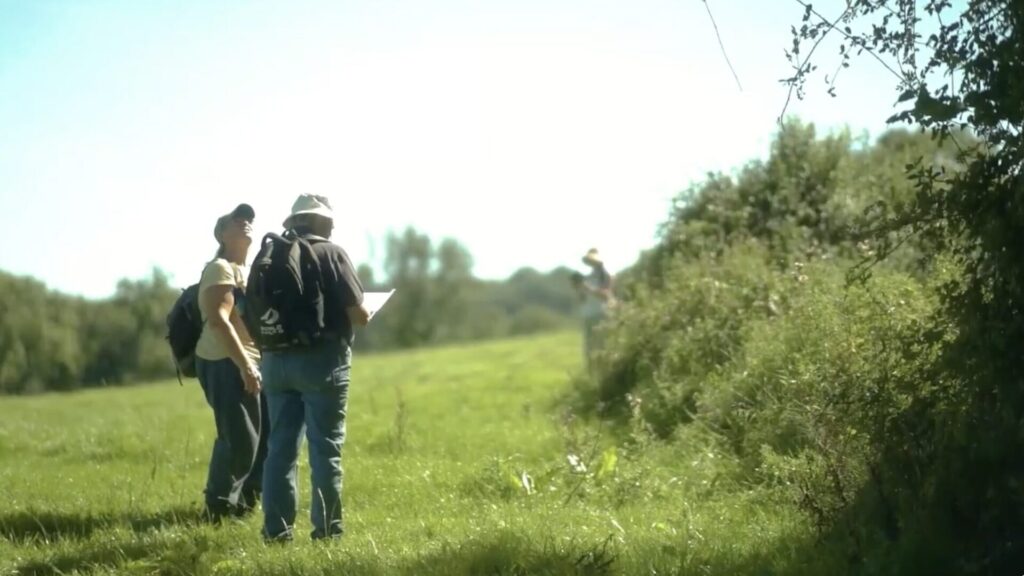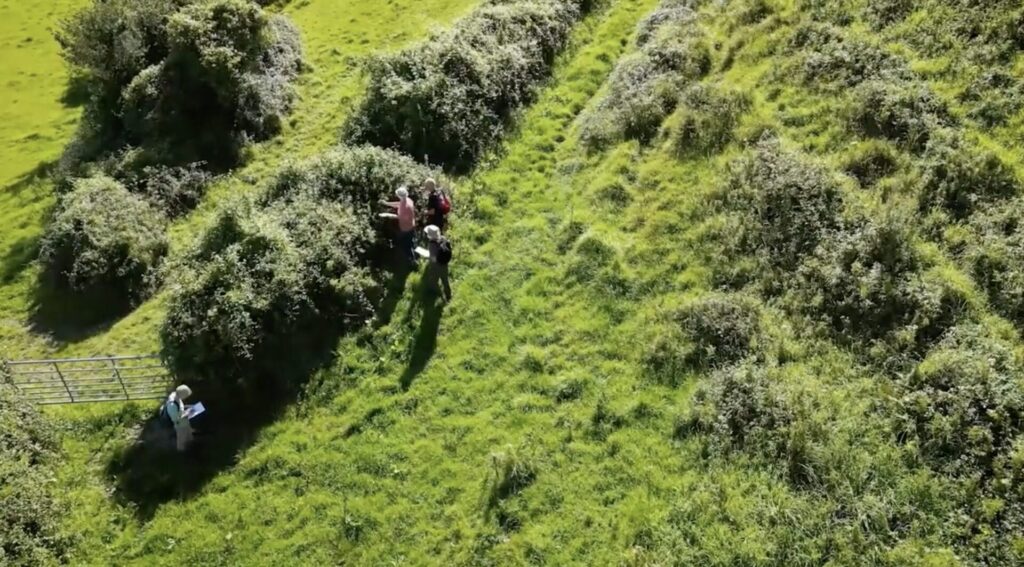With new incentives for sustainable farming, hedgerows are crucial – Andrew Livingston talks to hedge expert John Calder

‘Hedges are the single most important ecological building blocks we have in the farmed landscape, creating corridors for wildlife.’ Those were the words of Steve Barcley, the former Secretary of State for the Environment, Food and Rural Affairs (DEFRA).
When you think of farmland it can be easy to forget the hedge. For the farmer, it is not a commodity (unless you are a particularly keen blackberry picker). But for the wildlife of our countryside, it is a rich haven, a year-round food source and sanctuary for mammals, insects and birds.
‘They are part of the farmed landscape but the part that is not farmed – hedges escape the intensification of farming,’ said John Calder of The Great Big Dorset Hedge (GBDH), which is trying to restore and extend the hedgerows of Dorset. ‘People think of them as corridors, but that would only be right if animals only walk, fly or burrow along them. It’s not quite that way. But they are linked, so seeds will travel up and down hedges and certainly bats find a big hedgerow useful to navigate against and fly along.’
Improving the network of hedgerows across Dorset will help ‘support the biodiversity and protect against the effects of climate change’.
The first stage of this mission is being completed by an ever-growing team of volunteers who are out and about in the countryside surveying the hedgerows. Volunteers carry out one of two different surveys, public or private. The former is carried out along public footpaths – the GBDH team walks a footpath and surveys a hedgerow that may be alongside it.
A private survey is carried out on a farm, when the farmer has invited the team to come and survey the hedges.
Recent alterations to farmers’ government subsidy payments have increased the importance of hedge life to the farmer. The new scheme, the Sustainable Farming Incentive (SFI) pays farmers not for the amount of land they own, but for actions that they take on their farms that will not only improve food production but also grow food more sustainably.
As an expert on hedges, John was invited by DEFRA to join the Hedgerow Practitioners Workgroup for the creation of the SFI scheme.
‘Within the Sustainable Farming Incentive there are 23 actions through which you can acquire funding, but three out of the 23 are hedges.
‘Number one, you need to do an assessment of the condition of your hedges. Number two, you have to manage your hedgerows in a prescribed way that is environmentally friendly. And number three, if you’ve got hedge trees in a frequency of at least one every 100 metres overall, there’s some funding for that.’
So far, around 70 farmers have signed up to the GBDH to survey all the hedges on their farms. John says; ’The farmers are motivated by the desire to do the right thing,’ says John. ‘But also the necessity of recovering some of that basic payment scheme through the SFI. All our reports are now written with the SFI hedgerow actions in mind.’

What is a healthy hedge?
Typically it will take three volunteers an hour to survey one kilometre of hedge. During that time, they note the species present, the height and depth of the hedge and, most importantly, the lifecycle.
The lifecycle of a hedge is measured by the Adams Hedgerow Management Scale. The scale is named after Nigel Adams, a hedge laying expert, who was part of DEFRA’s Hedgerow Practitioners Workgroup with John. To understand the Adams Code, you need to understand a little about the history of hedgerow maintenance. John explains:
‘If you go back before we invented flails on tractors and chainsaws and all that stuff that makes it easier to slaughter a hedge, you’d have a man walking along the hedge side with a staff hook – a long stem with a hook on the end – and he’d be trimming that hedge, possibly every year. These days, that’s not what happens. You’ve got a flail doing the job, and it’s a very efficient tool.
‘In the old days, once the hedge was maybe 20 years old it would become a little bit out of control, and then you’d re-lay it. Every time you lay a hedge you invigorate the root systems to start some new growth – that would be more or less the start of a new cycle of that hedge.
‘So if you go back a few generations they’d be laying hedges every year, but on different parts of the farm. And that means that there are hedges in different stages all over the farm. Turns out that’s what’s ideal for nature.’
When you look at hedges today, they can be placed under four categories of the Adams Code; tightly managed, rejuvenated, well managed and finally running up. A tightly managed hedge would be one that is flailed with a hedge trimmer each year. Eventually, this can cause damage to the hedge to the point it needs rejuvenation.
Rejuvenation can come in the form of hedge laying, planting of new hedges and coppicing (fell a tree at its base to create a stool from which new shoots will grow). Eventually, a rejuvenated hedge grows into a well-managed hedge, which, if then left unmanaged, will become a hedge which is running up – the best for carbon capture. They are the largest in size, but they will begin to leave gaps in the bottom of the growth, so they eventually need to be rejuvenated again … and this is the life cycle of the hedge.

The answer to a healthy hedge? John says the formula for a healthy hedge is the combination of each stage of the entire cycle that makes the perfect hedge.
These days there are two quite different systems for managing hedges, says John. ‘In one case, it’s coming along with a flail and hitting it back to the same point at the same time every year (tightly managed hedges). Ultimately this will cause their demise, because it’s just too much pressure on the hedge for it to survive.
‘On the other hand, you might have particularly well-meaning people who think that carbon capture is everything, so in order to mitigate against climate change they decide “why don’t we just let our hedges grow up and up and up and up capturing carbon?” That’s now happening a lot in conjunction with rewilding, and it’s not all good because you end up with a row of trees – and a row of trees is something that has merit in its own right, but it’s not a hedge. At the bottom of a row of trees you don’t have that important dense cover for wildlife.’
The life cycle of a hedge may seem trivial, but John insists, ‘hedges have enormous importance and are an area where the farmers can make a relatively big impact environmentally, without enormously affecting their financial operations.
‘Alongside rivers, they are the part of the landscape where the farming community can do the most – can really make a positive impact.’
The Great Big Dorset Hedge is always keen for more volunteers or farm hedges to come and survey. Head to dorsetcan.org to get involved.

